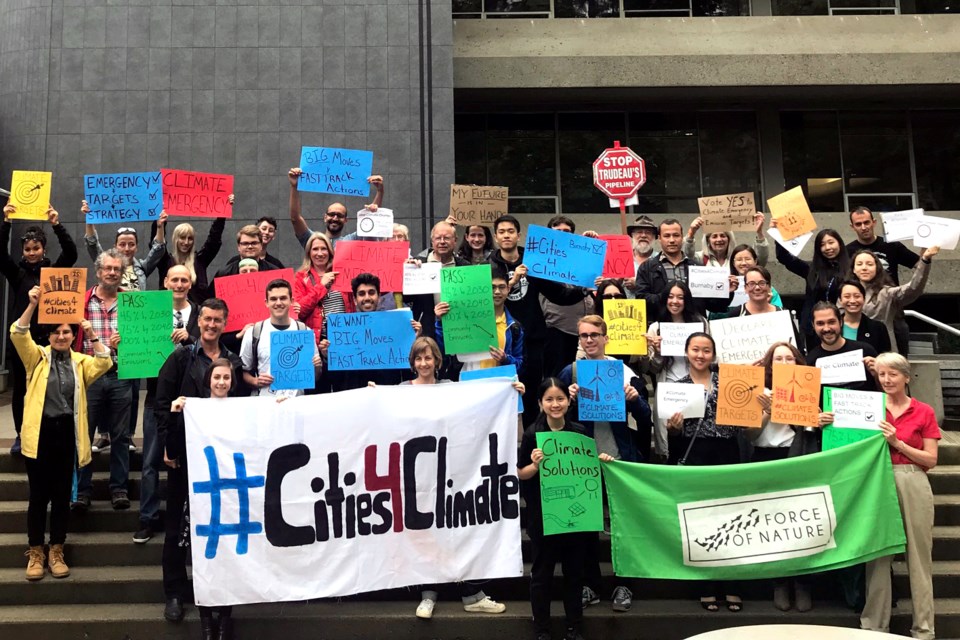The City of Burnaby’s net greenhouse-gas emissions in 2019 increased by nearly 3.3% over 2018, according to a new report.
Every year, the city submits a report, including a calculation of its total GHG emissions and contributions to GHG reductions, to the provincial government as part of its membership with the Climate Action Revenue Incentive Program.
According to that report, the city emitted 10,843 tons of CO2 equivalent (tCO2e) through the services it provides as a corporation. On the flip side, it also contributed to a reduction of 2,255 tCO2e in the community through its organic waste program. That adds up to a “greenhouse-gas emission balance” of 8,588 tCO2e.
For context, 8,588 tCO2e is the equivalent of burning nearly 3.7 million litres of gasoline, according to the U.S. Environmental Protection Agency.
By comparison, the city’s emissions in 2018 totalled 10,769 tCO2e, and the emissions reduction achieved through the organic waste program totalled 2,455 tCO2e. The total GHG balance for the city in 2018 added up to 8,314, according to last year’s report, meaning the net emissions increased in 2019 by 274 tCO2e – or the equivalent of burning nearly 117,000 litres of gasoline.
A staff report to council didn’t explain the reason for the increase in net emissions.
But staff did break down the city’s emissions by source, citing its fleet of vehicles as the largest emitter at over 50% – gas-powered at 17.5% and diesel at 33%. Meanwhile, natural gas heating in city buildings contributed about 46%, while electricity contributed 3%. That breakdown was effectively unchanged from 2018.
Local governments that are part of CARIP are ranked on a four-level scale, with level one representing governments that have “demonstrated progress” on CARIP commitments. Level two governments – where Burnaby ranks – is for cities that have begun measuring GHG emissions, while level three is for governments that have shown “accelerating progress” on commitments. Level four is for governments that have achieved net-zero emissions.
According to the staff report, the city has made progress on achieving level three, including by converting all streetlights to LED and installing electric-vehicle charging stations to advance the city’s goal of electrifying the city’s fleet of vehicles.
On the community level, staff noted efforts toward making more “complete” communities within the city to reduce car travel. The goal, ultimately, is to have relatively self-contained communities around the four town centres – Metrotown, Edmonds, Lougheed and Brentwood – so people don’t have to travel around as much to meet the needs of their everyday life.
Staff also pointed to the city’s work on protecting more vulnerable natural areas and its work converting organics to energy.
Last September, city council declared a climate emergency and committed to net zero emissions by 2050, along with interim goals of 45% emissions reductions compared to 2007 levels by 2030 and 75% reductions by 2040.



